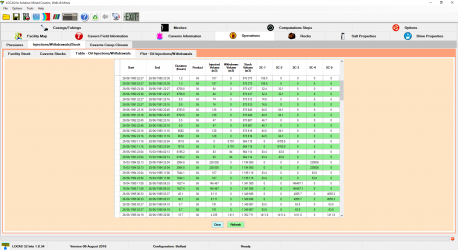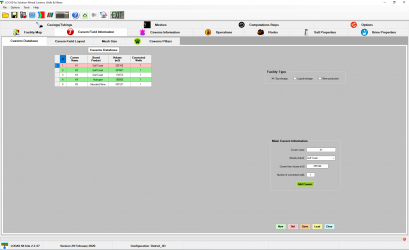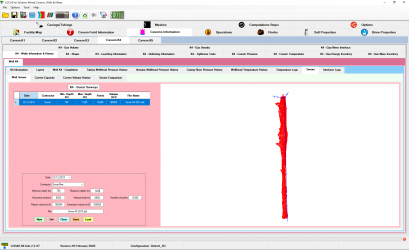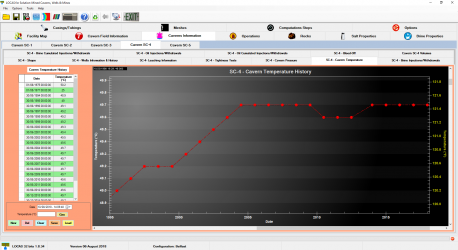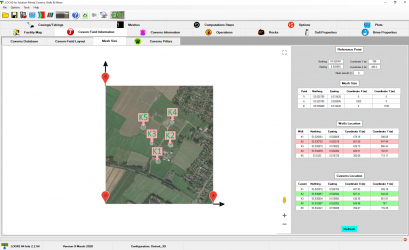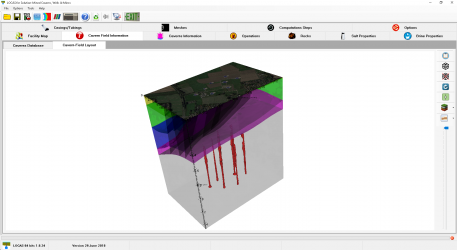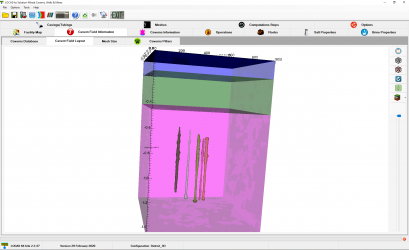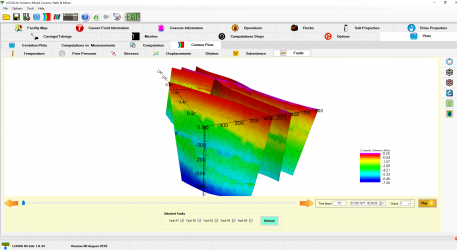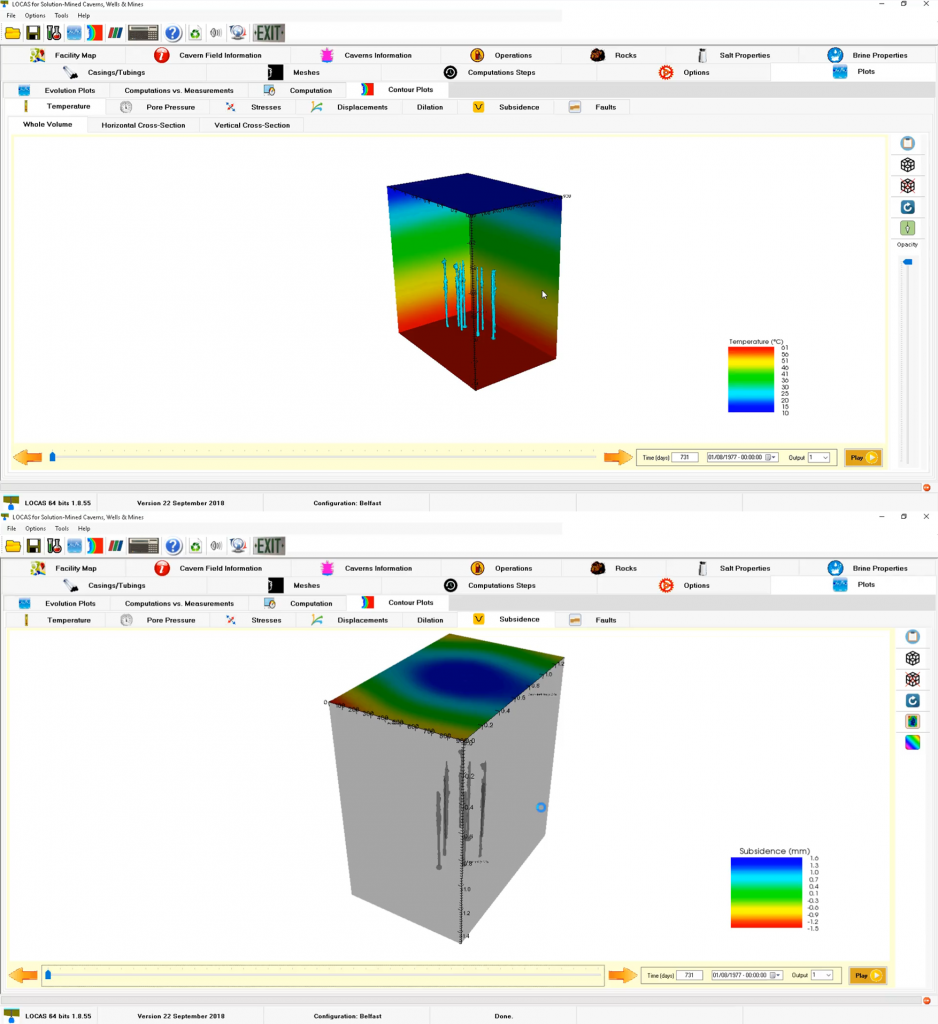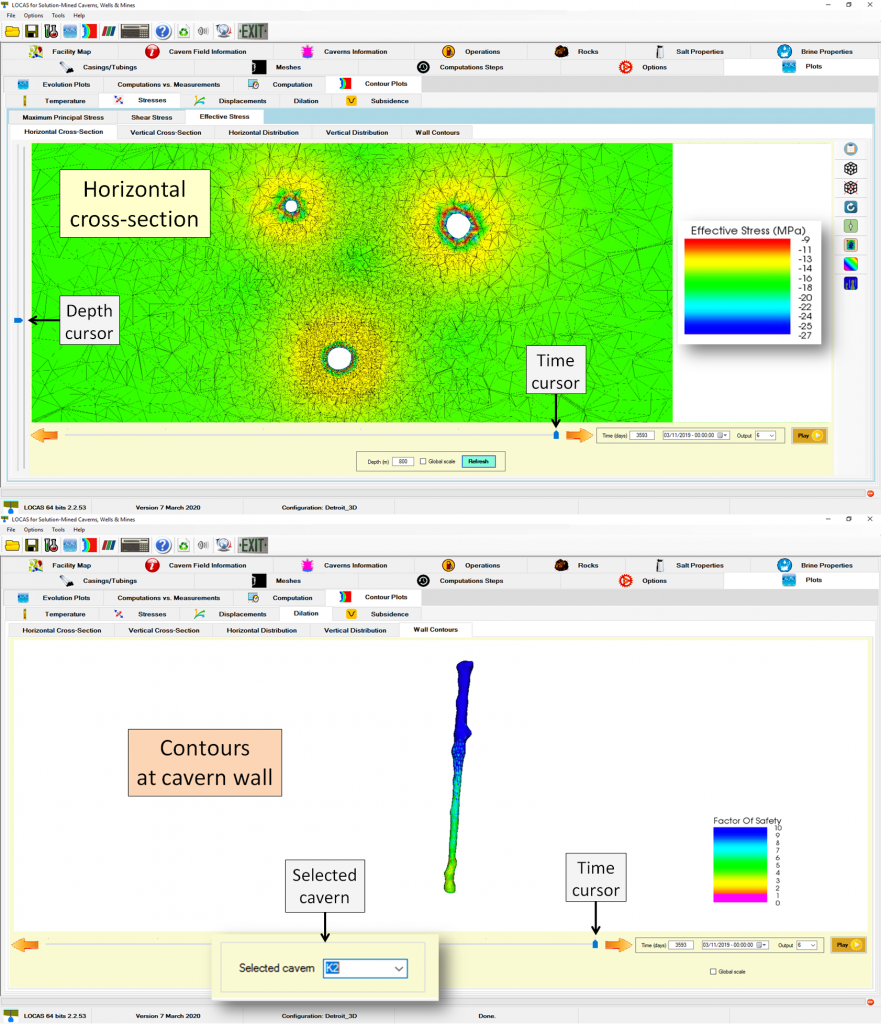
LOCAS – Software package for full geomechanical modeling and data management of storage facility
Simulation of the non-linear and time-dependent mechanical behavior of salt caverns requires advanced constitutive models and accurate numerical computations. LOCAS is a software suite developed continuously by Brouard Consulting for over 20+ years for the purpose of analyzing salt caverns for brine-production, gas or liquid storage.

LOCAS is up to now the only commercially available software capable to couple cavern thermodynamics and rock-salt complex geomechanics. This is of upmost importance for problems such as gas-storage management, caverns stability analysis, subsidence calculation, or cavern-abandonment. LOCAS 3D version allows collection of numerous data related to a facility in one single place.
Functionality of LOCAS software suite allows to
- Collect & archive in a single place data from an entire facility
- Monitor the status of a facility
- Modeling in a complex geology including dozens of caverns and faults
- Use actual cavern shapes from sonar surveys
- Determine the short and long-term mechanical stability of caverns
- Predict cavern pressure and temperature evolution
- Calculate ground subsidence
- Quick testing of future operations (workover, release of constrains, etc)
LOCAS is designed to provide next key features needed for succesful implementation:
- User-friendly interface, usable by non-experts
- Powerful finite-element processor for stability analysis of caverns in the short or long term
- Enhanced OpenGL-based 3D visualization engine for visualization and analysis
Bulk collection of data stored in the one software solution
LOCAS has the ability to collect and store multiple data from an entire facility:
- Wellhead pressure data (brine / product / blanket), no limitation regarding the number of data points
- Volume / flowrate of liquid / gas pumped in or withdrawn
- Inventory (mass, energy)
- Production data (brine-production caverns)
- Bleed-off data (liquid storage)
- Sonar surveys
- Logs (temperature, interface, GR, etc)
- Leaching data
- Tightness tests data
- Pictures
Comprehensive physical phenomena
The powerful finite-element processor allows to take into account the following physical phenomena
- Salt creep using Norton-Hoff, Munson-Dawson, Lubby2 or Lemaitre-Menzel-Schreiner constitutive laws
- Dislocation creep and pressure-solution creep can be considered
- Heat flux to or from the rock mass, heat exchange between gas and brine
- Mechanical and thermal expansion/contraction of cavern liquids
- Real gas thermodynamics, for gas caverns
- Brine complementary dissolution/crystallization
- Adiabatic compression for liquid-hydrocarbon-filled caverns
- Brine micro-permeation through rock salt
- Increase of salt permeability due to the onset of tensile effective stresses
Bundle of Embedded post-processing features
LOCAS 3D provides numerous embedded post-processing features, allowing easy data analysis even for a non-expert. Based on OpenGL-based 3D visualization engine it integrates a substantional number of available templates. Three-dimensional spatial distributions, contours, in horizontal and vertical cross-sections or on the cavern wall, can be plotted for the following variables:
- displacements, including subsidence;
- principal stresses, effective stress;
- pore pressure;
- dilation Factor of Safety (FOS); and
- Coulomb criterion for the onset of fault slip.
For each cavern of a facility, temporal evolutions of the following variables are provided: cavern pressure and temperature (brine and gas); cavern compressibility (for brine production or liquid-storage cavern); cavern volume (creep closure), and comparison with field data (sonars for instance) whenever available.
Complimentary support
From the very beginning, LOCAS has been designed to be a very user-friendly software package that can be used by non-experts with almost no training. It also was designed to facilitate sensitivity analysis, which is a key point when working with salt-cavern problems. LOCAS has been used by dozens of students worldwide and has led to the publication of numerous journal and conference papers.
Brouard Consulting offers complimentary support for users, either paid users or those testing a trial version, as understanding user problems helps in designing a more intuitive interface. LOCAS has been developed continuously and updates are made on a timely basis.
All facilities are different, and the way in which people work often is different from one place to another. This is why Brouard Consulting complimentary offers the possibility of adapting LOCAS to special needs — for instance, giving the ability to load sonar surveys from a new service provider whenever needed.
Advanced software technologies applied
LOCAS has been developed within the .NET framework from Microsoft. Brouard Consulting benefited from a direct support from Microsoft through its BizSpark program. LOCAS uses the most recent enhanced solutions, including parallelization techniques embedded into Intel Fortran compiler for its finite-element computation core.
Dozen of 2D and 3D zoomable plots are available in LOCAS using the most advanced solutions available — i.e., ProEssentials from Gigasoft Inc. (TX) and the 3D OpenGL VTK Visualization toolkit. The 64-bit architecture allows very large models to be constructed.
LOCAS is available as a stand-alone program and also is available in server version as in the Azure cloud from Microsoft. The cloud version is extremely secure, and it simplifies initial set-up and, later, maintenance, while offering very high computational capabilities. The cloud version is available for a few years already and can be accessed securely through any firewall via RDP, Citrix, or directly in a web browser.

